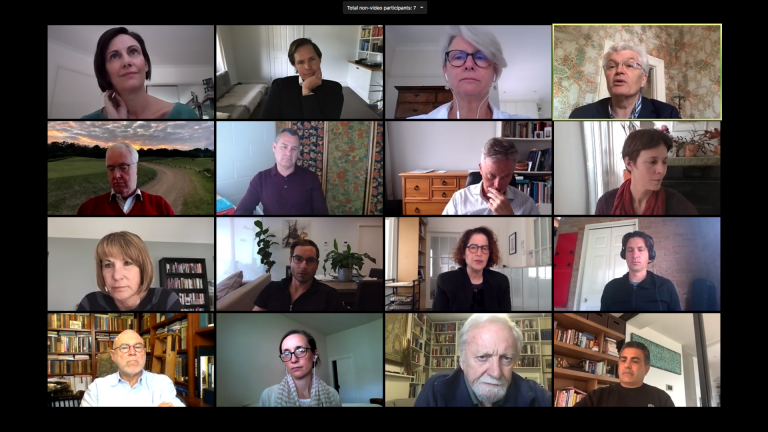Since 1996, when first elected, the Howard Government has looked to amend the Aboriginal Land Rights (Northern Territory) Act 1976 (ALRA). A decade later, the amendment package has finally been released. Given the extent of public debate and negotiations, especially between the NT Government, land councils and the Commonwealth, the quality of the outcome seriously calls into question the capacity of the Australian policy making community to produce workable high quality Indigenous policy.
Alongside largely procedural changes to Part IV of ALRA there are a host of other proposals contained in 91 pages of amendments that are about to be rushed though the Australian Senate. These include proposals to ‘normalize' townships on Aboriginal-owned land, reform land councils, improve the accountability of so-called royalty associations and reform the Aboriginals Benefit Account (ABA), the institution to which the equivalents of mining royalty raised on Aboriginal land are paid.
The original ALRA had finely balanced and cleverly considered financial provisions developed by the Woodward Land Rights Commission in 1974: mining moneys paid to the ABA were to be divided 30% to people in areas affected by mining; 40% to guarantee independent budgets to land councils; with an unspecified portion of the balance to be paid to, or for, the benefit of Aboriginal people anywhere in the NT. In 1974 Justice Woodward had recommended that traditional owners be provided with a right of consent (the so-called veto) on exploration and mining on their land. Instead of a de jure or legal property right in commercially valuable minerals, Aboriginal interests were granted what was subsequently termed a ‘de facto' property right in minerals that provided the leverage for negotiation with resource developers.
The amended ALRA will destroy the integrity of the ABA and will undermine the thoughtful balance embedded in the financial framework of the current ALRA. Perversely, the amended ALRA will make exploration and mining on Aboriginal land less likely because it will weaken Aboriginal property rights and incentives. How will this happen?
It needs to be understood how the consent lever works as a form of property right. Traditional owners need to agree as a group to a proposal to explore and mine their land. In return, they are granted a minimum 30% of MREs from that mine (not to be paid to them, but to people in areas affected) but they can also negotiate additional benefits that are generally paid to regional incorporated organizations referred to as royalty associations. The incentive is there, but economists might argue that it is ‘fuzzy' or indirect or risky from the perspective of traditional owners. Now though, these incentives appear fuzzier, more indirect and riskier because the amended ALRA will ensure that traditional owners get no untied cash benefits from experiencing the possible negative social impacts of mining and allowing non-renewable resources to be extracted from the land that they own.
The amendments require that both moneys for areas affected and any additional negotiated payments are only paid ‘with a purpose' (that is are tied); such funds are to ensure benefit to the whole community not land owner groups. There are many potential problems here. History shows that when such payments are applied for community purposes governments cynically sit back and let these compensatory payments substitute for normal expenditure on citizen services.
And an assumption is being made that royalty associations cannot independently develop sound expenditure, financial and investment policies that will divide their income from mining and other commercial sources as they choose. Again there is historical evidence that the best associations not only have sound policy and practice, but also that Aboriginal investment has sometimes been the only investment in remote regions with iconic examples being the purchase of, and investment in, the Cooinda Resort and the Crocodile Hotel in Kakadu National Park by the Gagudju Association. If there are royalty associations that need corporate governance capacity development then good public policy should address this issue.

'Stolen Wealth' – Nick Chesterfield |
To exercise the leverage provided by consent provisions, traditional owners also need independent advice. The ALRA established land councils with independent, but ministerially-approved, budgets. Over the past 30 years Aboriginal land councils in the NT have evolved into statutory authorities with diverse objects: land claims, land management and political advocacy for their Aboriginal constituents. Land councils have had their efficiency audited by the Australian National Audit Office (ANAO) from time to time – they are hardly immune from external scrutiny. There are four land councils in the NT, two small councils with island jurisdictions, and two large land councils that cover the NT mainland of about 1 million sq kms. As in all polities, there are pressures for regional and community autonomy, but the reality is that to date land councils have balanced regionalization with the organizational capacity that only comes from scale. The amendments will again raise the spectre of breaking up land councils with associated loss of capacity and risks for traditional owners.
The ABA will come under even greater ministerial control, with potential for the all-Aboriginal membership, historically nominated by the land councils, to now be diluted by 1-2 experts nominated by the Minister and presumably accountable to him. And the amendments also empower the Minister to determine the financial policy of the ABA. Already there are clear signs that the new Minister Mal Brough will be open to raiding the ABA, with proposals now before the Advisory Committee to allow $20 million from the ABA to fund Aboriginal housing in Alice Springs and Galiwinku, to provide services normally provided to poor Australians by the state from revenues raised from the mining on Aboriginal land.
A new and additional Howard government agenda has been a campaign to allow individualization of group-owned Aboriginal land. This is ostensibly to foster ‘incentivation' to own and maintain houses and businesses in Aboriginal townships. The economic logic is that individual title might facilitate access to mortgage and commercial finance from banks. Under a proposed scheme, 99-year head leases for towns can be negotiated by an NT or Commonwealth government entity, with payments to traditional owners capped at 5% of the town's approved capital value. The apparent aim of this proposal is to get debt-financed public housing into townships because decades of underinvestment by governments in grant-funded community housing has created a crisis. It is very unclear why an Australian government ideologically committed to the free market would want to cap the amount that Aboriginal land owners could charge to lease their land. This is especially worrying because there will be no cap on sub-lease charges, including rents that traditional owners might need to pay to live on the land that they own.
Curiously, this new proposal will be underwritten by the ABA. This suggests that the ABA will be required to finance the so-called normalization of townships by subsidizing the NT government without a sunset clause. What is proposed here needs to be carefully considered: revenue raised from mining on Aboriginal land will be used by the NT government to pay Aboriginal land owners for leasing their land. It is possibile that the same land owners will then need to pay this ABA-sourced money back to the NT or Commonwealth entity to sub-lease a township block for an uncapped amount. And the leasing payments traditional owners receive will be tied (unlike for any other Australian land owners) and will need to be applied ‘with purpose' for community benefit. One wonders what the incentive to lease a township site might be, it is clearly unlikely to be financial.
How will the new ALRA work if passed by the Senate into Australian law? At the moment this seems very unclear. I raise the following five broad concerns for consideration:
- Why would traditional owners of township sites, if properly advised, allow an NT or Commonwealth entity to hold township headleases for 99 years in return for restricted and tied payments?
- If they do, will they lose control of what commercial and residential developments are allowed on their lands; and what will happen at the expiry of the lease?
- Outside townships, what incentives are there for traditional owners to consent to exploration and mining? Compensation payments will be heavily controlled by Canberra in a manner that is not applied to any other Australian landowner.
- How effectively and independently will land councils operate when their operations will be under ministerial directive, their budgets under direct ministerial control (with no minimum guaranteed) and with potential fragmentation a constant threat?
- Will money raised from mining on Aboriginal land that could be used to partially underwrite Aboriginal land management and restoration and development just be used, at ministerial whim, to fund the provision of services that are a state responsibility?
The new ALRA will further erode the already weak property rights that traditional owners hold. Australia is unusual for a rich settler-majority colony because its land settlements with Indigenous peoples are provided without resource right settlements. Unlike in Canada, the USA and New Zealand, in Australia commercially-valuable resources like minerals, forests and fisheries have been excluded from land settlements. In partial recognition of this, the Woodward Commission provided a right of consent as a weak form of property. But to date it has clearly been inadequate to underwrite Aboriginal economic development and Indigenous well-being in Australia today is lower than that of Indigenous minorities in other settler colonies. Under such circumstances, why is it that under the guise of being pro-development, the Howard government is actually limiting options for individual incentive and accumulation? These amendments will weaken the property rights of traditional owners, will weaken land councils and curtail the role that the ABA could play in delivering diverse forms of economic development that accord with heterogeneous Aboriginal aspirations in the NT. The amendments will allow governments in Darwin and Canberra to avoid addressing the backlogs and historical legacies evident on remote Aboriginal lands and cost shift their fiscal responsibilities onto the ABA.
These amendments will create bad law that will be deleterious to the interests of Aboriginal people in the NT and ultimately the Australian nation. The ideologically driven and limited agenda of the government of the day aside, these amendments represent bad policy making after extensive and expensive decade-long consideration: future generations will bear the costs of repairing the damage that will be done.
The Senate Community Affairs legislation Committee is holding a public hearing on the Aboriginal Land Rights (Northern Territory) Amendment Bill 2006 in Darwin today (21/07/06)



